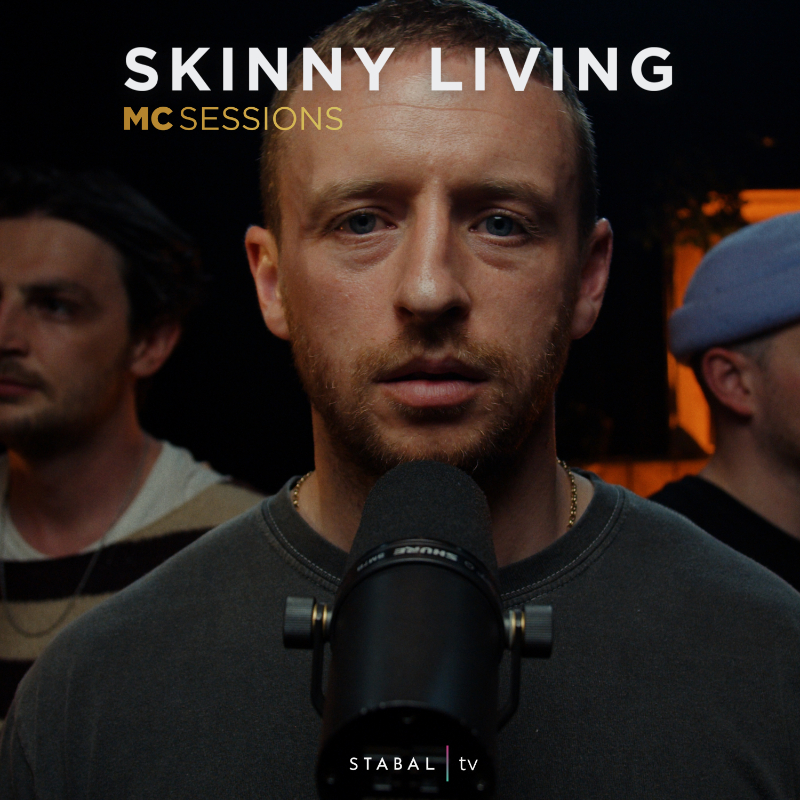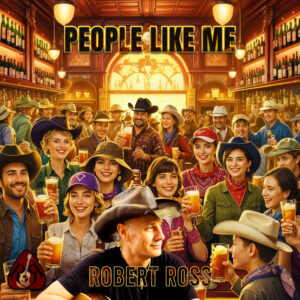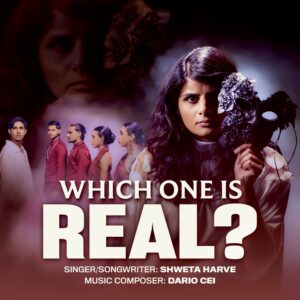Pop music thrives on identity—on image, persona, the idea of who we think we are. But every so often, a song comes along that pulls back the surface and asks the question behind every performance: who’s the one performing, and who’s watching? In “Which One is Real?”, Shweta Harve, joined by Dario Cei, turns that question into something intimate, haunting, and quietly radical.
The track, out October 24 on MTS Records, follows Harve’s Billboard and Mediabase charting single “What the Troll?”, a clever dissection of digital hostility. This new song moves inward, away from the screen, into the mind—the theater where ego and soul play their endless roles. “Who you see is not you,” she sings. “I’m the one who sees you.” It’s not accusation; it’s recognition.
Harve structures the song like a conversation between two narrators who share the same voice. The verses belong to the ego, restless and uncertain. “In the wake of doubt, you run / Like a stranger of sorts, in the crowd, no way out.” The lines spill forward in quick, rhythmic phrasing, as if the words themselves are trying to outrun clarity. Then the chorus arrives—calmer, slower, declarative. “I’m the one who sees you,” she sings, the melody stretching, steady, grounded. It’s the sound of realization overtaking reaction.
Cei’s production makes this dialogue physical. Acoustic guitar figures trace the edges of Harve’s vocal like thoughts circling themselves. A low synth hum rises beneath them, subtle but insistent, like a pulse trying to align with the breath. The arrangement grows gradually, not toward climax but toward coherence. The contrast between organic textures and electronic shimmer becomes its own metaphor: the body and the spirit finding a shared rhythm.
In the bridge, Harve offers the song’s most human lines: “Whether running blind or as a waning star / I am your compass, no matter how far.” The metaphor is celestial but the delivery is plainspoken, her tone carrying the tenderness of reassurance. She’s not scolding the listener for getting lost; she’s reminding them that the path home was never really gone.
By the final repetition—“In the mirror of the soul, I’m the one who sees you”—the song feels less like a pop single than a mantra, looping back on itself until the ego quiets down and the self begins to listen.
There’s restraint in everything here: in the phrasing, in the pacing, even in the production’s refusal to overwhelm. Harve trusts silence as much as sound. That discipline gives the song its emotional gravity.
In a culture that rewards volume and distraction, “Which One is Real?” is an act of deliberate stillness. Harve isn’t just asking who we are—she’s showing how the question itself can become a form of clarity. The song doesn’t end with certainty. It ends with awareness, which is rarer, and harder won.
–John Parker






